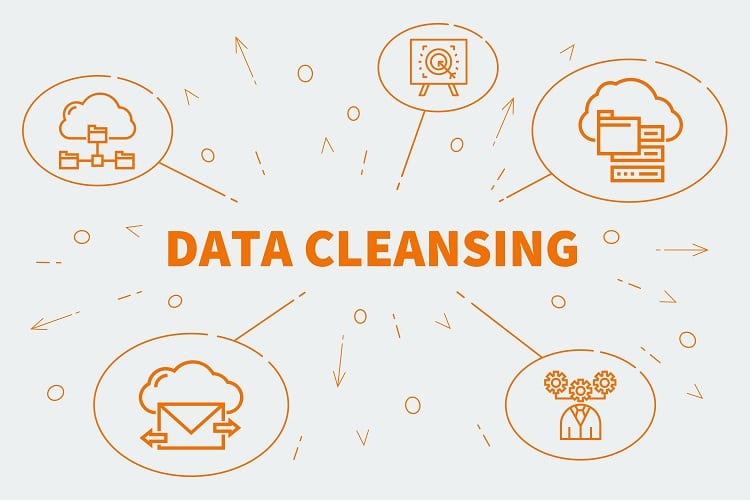


There are many ways to go about generating leads.
Some companies rely on inbound marketing methods to bring qualified leads to them.
Others use outbound strategies that interrupt the consumers and attempt to sell them on a product or service.
No matter which method your business uses to bring in new leads, having additional data can help you make smarter decisions that result in more conversions.
Arguably the most innovative and effective way to get data for your lead generation campaign is through data mining: a process that uses software tools to extract information from various locations on the internet.
To learn how data mining can improve your lead generation efforts ‒ and how you can implement data mining yourself ‒ read on.

There are several reasons you might want to incorporate data mining into your lead generation strategy.
The most common use for data mining in lead generation is to find potential leads.
There are many places on the internet that contain information about people who might be interested in your product or service. A data mining tool can help you find these people and organize their names, contact information, and other relevant data into a spreadsheet or CRM software.
Here are a few ways to use data mining to find potential buyers.
Your competitors are targeting the same people you want to sell to. Take advantage of the competition’s hard work by scraping their community portals, forums, online reviews, and social media accounts.
Note: “scraping” is a term that refers to a software tool extracting data from a webpage or database.
Not only can you find prospective leads doing this, but you can also get a sense of what their customers and followers are talking about. Look for frequently mentioned pain points, complaints, and issues that consumers are having with your competitor’s product or service.
If you can address those concerns and create a better customer experience, you can win over those customers and increase your market share.
If you’re targeting a specific type of business in a certain location, you can scrape popular business directories to get a neatly formatted list of every business in the area.
This is an excellent lead generation method if you’ve got a product you want to sell to florists in Los Angeles or a service you want to market to auto repair shops in Minneapolis.
Here are a few listing directories you can scrape to find this information:
Attending events and conferences is a popular way to generate high-quality leads. But you don’t have to go to the event to gain access to the people attending.

Many event websites keep a detailed list of every person attending, complete with their contact information and the businesses they represent. Scraping the website of an event your target market will be attending can bring you a lot of prospective leads in a very short time.
If you don’t have any events in mind, a quick Google search should help you out. Just search “[Industry] Conferences [Current Year]” or something similar, and you’ll have a bunch of scrapable event websites right at your fingertips.
One of the best lead generation methods is to make a comprehensive blog that covers every single topic your target market might be interested in.
Of course, building a successful blog takes a ton of time, effort, and patience. If your blog doesn’t have the traffic numbers you’re looking for, you can look at other blogs in your industry and find out who is reading and sharing their content.
If you don’t have any industry blogs in mind, you can use BuzzSumo to find them.
BuzzSumo is essentially a social sharing tracker. It tells you which websites and pieces of content are getting the most shares for a particular keyword. So, if you have a business that sells massage tables, you could type in “best massage tables” into BuzzSumo and see which websites are making content about massages tables that people are sharing.
If you’re willing to spend the money, a BuzzSumo Pro account will also let you see who shared a particular piece of content. You can use this method to generate a huge list of potential leads without even using a traditional data mining tool.
You don’t always have to look outward to find new leads.
If your company has built up a substantial collection of data over the years, you can unleash a data mining tool to find potential customers in your website visitors, social media following, customer database, sales history information, and other internal data sources.
Combing through internal data can also help you qualify leads you’ve already generated, as well as update old lead entries with new information.
Okay, we’ve covered a few of the more useful data mining methods. Let’s move on to some of the best data mining tools available today.

Parsehub is a free web scraping tool that allows you to extract data from almost any website. If you want to perform some of the more straightforward data mining tasks mentioned earlier in this article, this software is one of your best bets.
It’s relatively simple to use, too: just open a website, click on the type of data you want to scrape, and download the results. Parsehub allows data to be downloaded in JSON, .csv, and API formats, enabling you to use a variety of software tools to organize and cleanse your data.
Unfortunately, the free version of the tool only allows you to scrape 200 pages in a single run. If you’re scraping a website with thousands of pages, you’ll need to upgrade to their Standard plan ($149 per month) or their Professional plan ($499 per month).
GrowLabs is a comprehensive data mining tool that offers several useful features:
If you want a comprehensive lead generation solution, I recommend combining a simple scraping tool like Parsehub with a more complex data mining solution like GrowLabs. Each has its benefits, and when combined, can become an unstoppable lead generation combo.
If you want to optimize your lead generation process, data mining is only the beginning. To make full use of the data you collect, you need to clean that data.

According to Wikipedia, data cleaning is “the process of detecting and correcting (or removing) corrupt or inaccurate records from a record set, table, or database.”
Going the extra mile and cleaning your data can remove a lot of false positives and make your lead generation process more efficient.
However, it’s an incredibly complex topic with a whole field of study attached to it (Data Science).
Unless you have a mountain of leads, and an even larger mountain of money to pay for a data scientist to sort through those leads, I suggest you do some simple table formatting and move ahead with the prospecting process.
